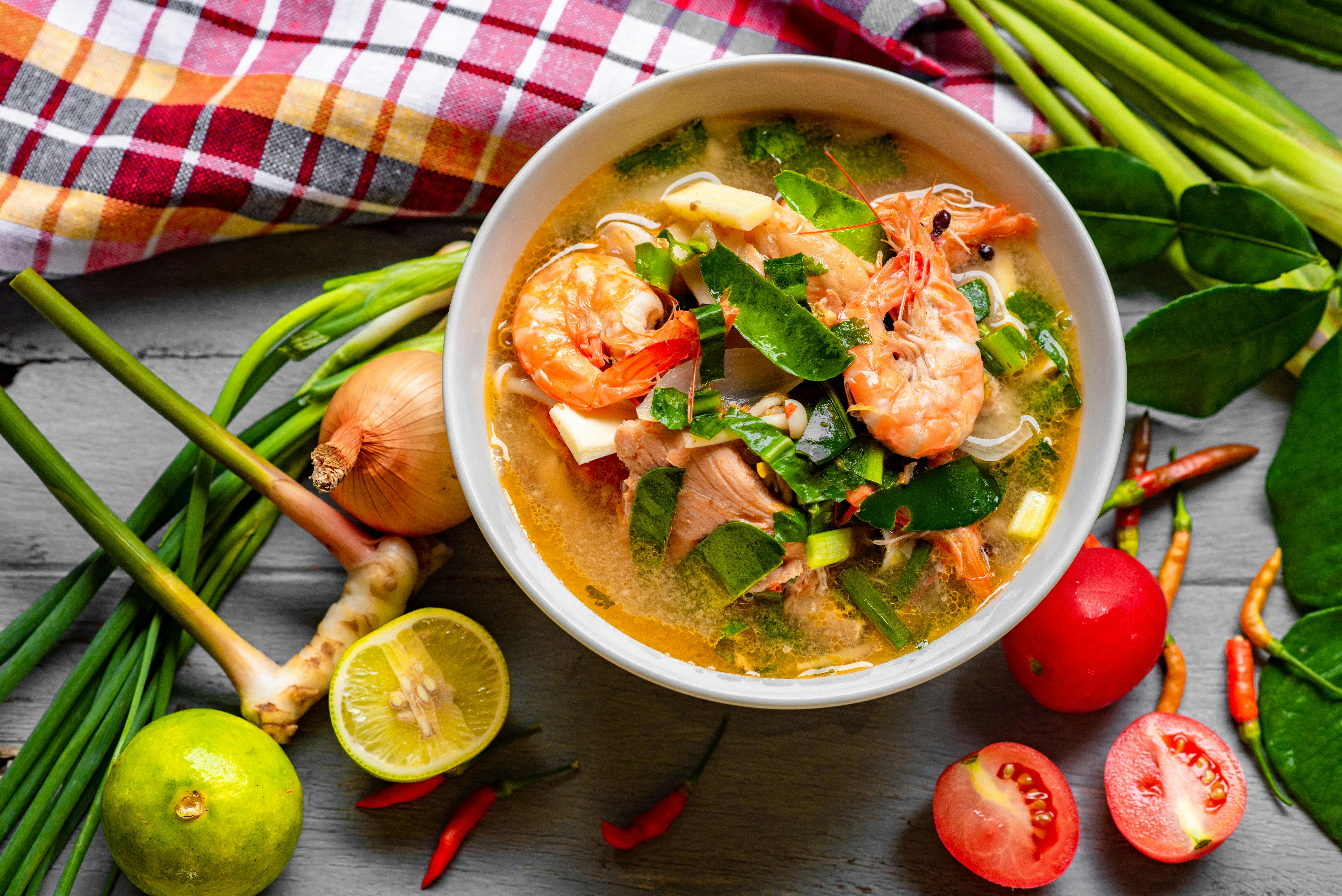The history of: Tom Yum Soup
Tom Yum, with its heady aroma and sharp, invigorating tang, is one of Thailand’s most iconic contributions to global cuisine. Spicy, sour and fragrant, this soup embodies a delicate balance of elements central to Thai cooking. While its popularity now sees it from street vendors in Bangkok to high-end restaurants in London, Tom Yum’s roots are humble, drawn from the waterways and herbal gardens of central Thailand.
The name itself offers a clue to its nature: tom refers to the boiling process, and yum to the characteristic hot-and-sour flavour profile found in many Thai salads and soups. Traditionally, Tom Yum was prepared with freshwater shrimp caught from the rivers that flow through the central plains. Infused with galangal, lemongrass, kaffir lime leaves, bird’s eye chilli, and fish sauce, the broth was – and still is – a celebration of the Thai landscape, relying on ingredients grown wild or cultivated nearby.
Although the exact origins of Tom Yum are difficult to pinpoint, it likely emerged between the 14th and 18th centuries when Thai cuisine began to absorb and refine influences from neighbouring cultures such as Khmer, Chinese and Lao. Over time, Tom Yum became a staple of the Thai kitchen – a daily ritual in many households. It was restorative and practical, allowing for a medley of ingredients and a kind of culinary improvisation that made it endlessly adaptable.
Over the years, Tom Yum has evolved into several distinct variations. The most common is Tom Yum Goong, made with prawns, but other versions include Tom Yum Gai (with chicken), Tom Yum Pla (with fish), and even Tom Yum Nam Khon, which adds evaporated milk or coconut milk for a richer, creamier texture. While purists may favour the clear broth of traditional recipes, the creamy versions – especially popular in Bangkok – offer a rounder, mellower profile without compromising the soup’s fiery heart.
Its appeal is not only culinary but cultural. In Thailand, food is rarely eaten alone, and Tom Yum often occupies a central place on the table, its communal nature encouraging sharing and conversation. Abroad, it has become shorthand for Thai flavour itself – a single dish that encapsulates the country’s approach to food: balance, freshness, complexity and respect for ingredients.
In Cyprus, Tom Yum soup is not part of the traditional food landscape, yet it has quietly appeared on the menus of Thai and pan-Asian restaurants across Nicosia, Limassol and Larnaca. Here, local seafood can occasionally stand in for prawns, and while not all herbs are readily found fresh, the island’s growing culinary diversity means galangal and kaffir lime leaves are no longer strangers to Cypriot kitchens. In its intense heat and cleansing acidity, some even find an echo of avgolemono or Cypriot lemon broths – dishes that likewise seek harmony through contrast.







Click here to change your cookie preferences